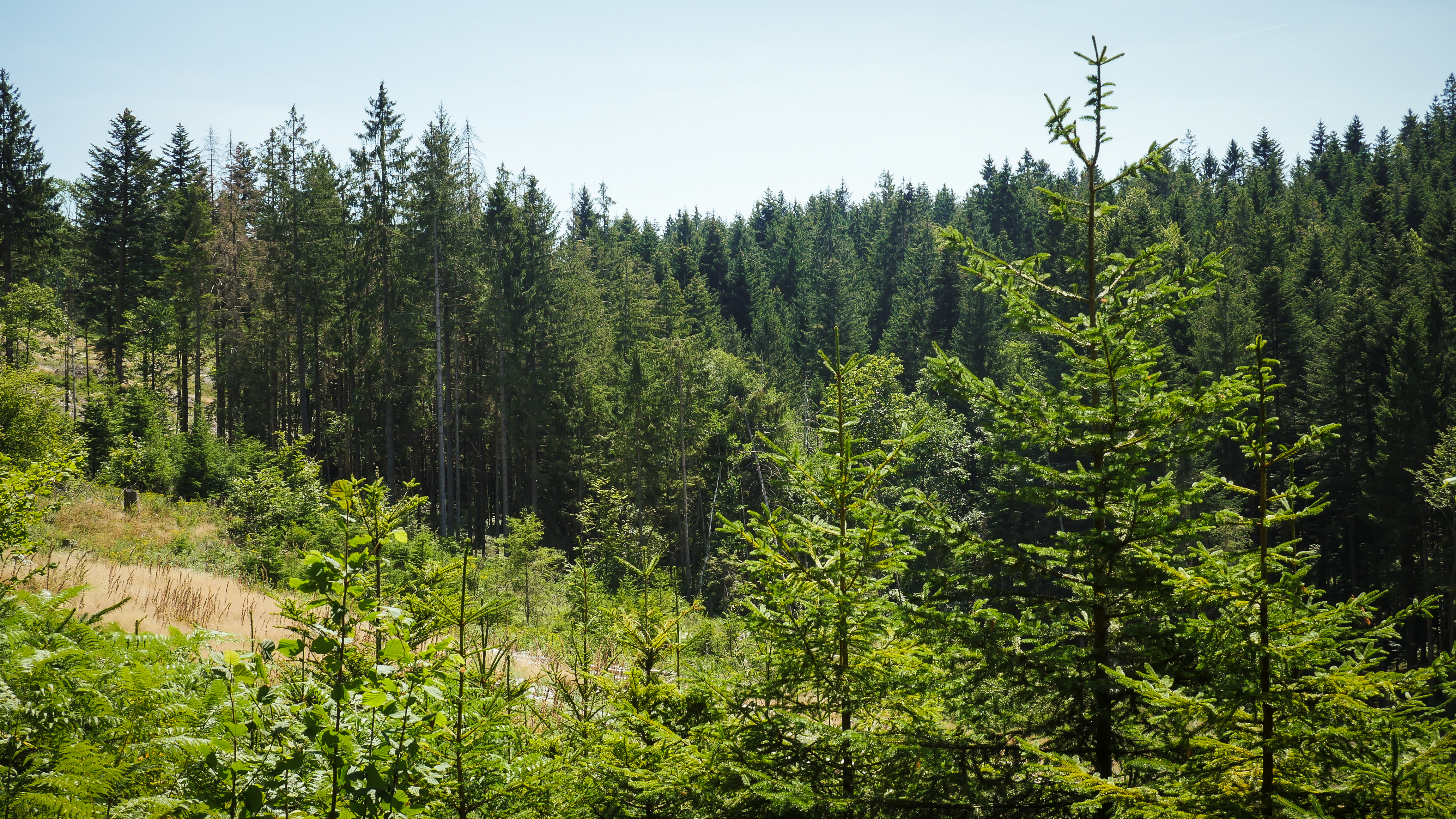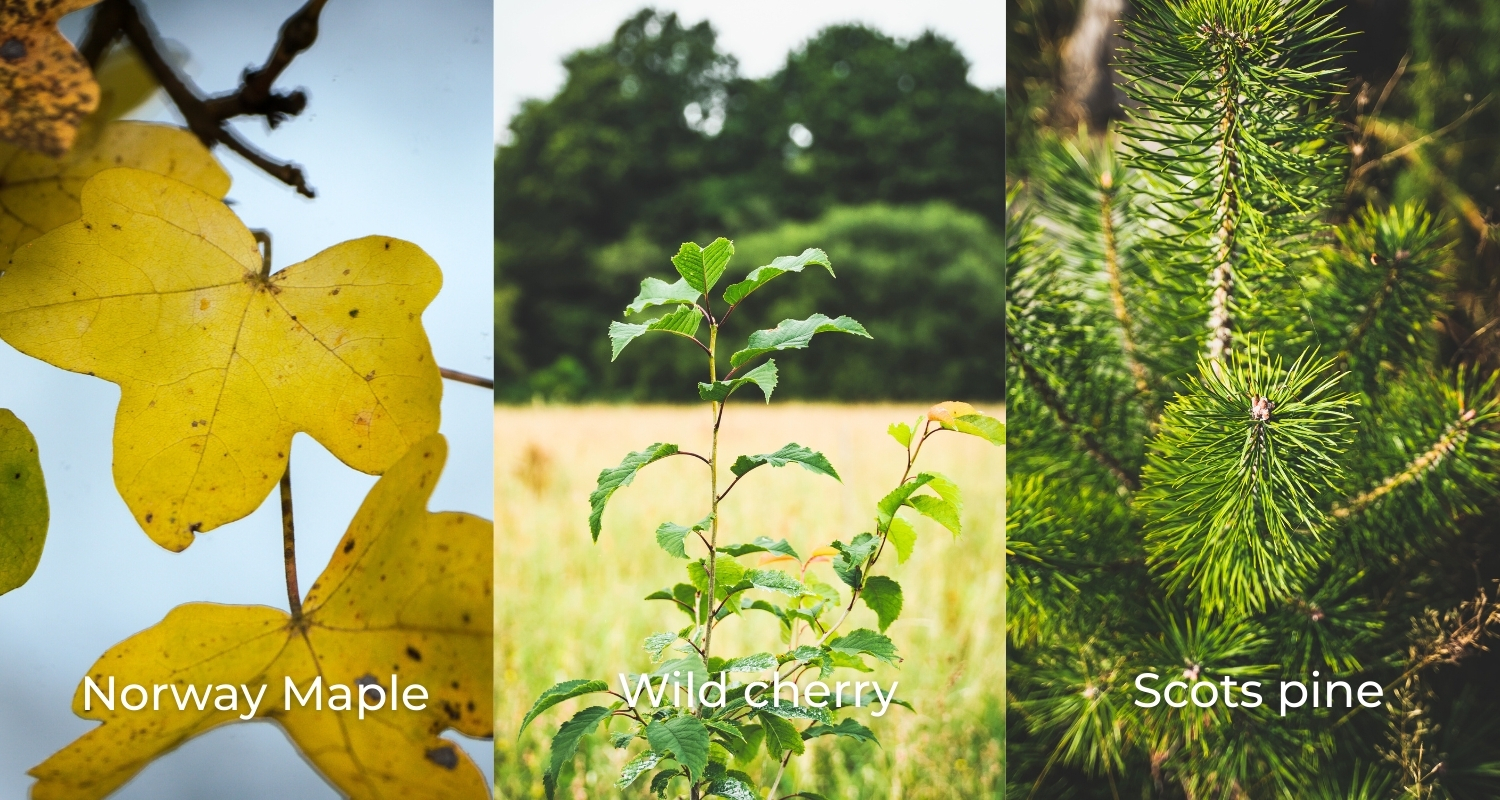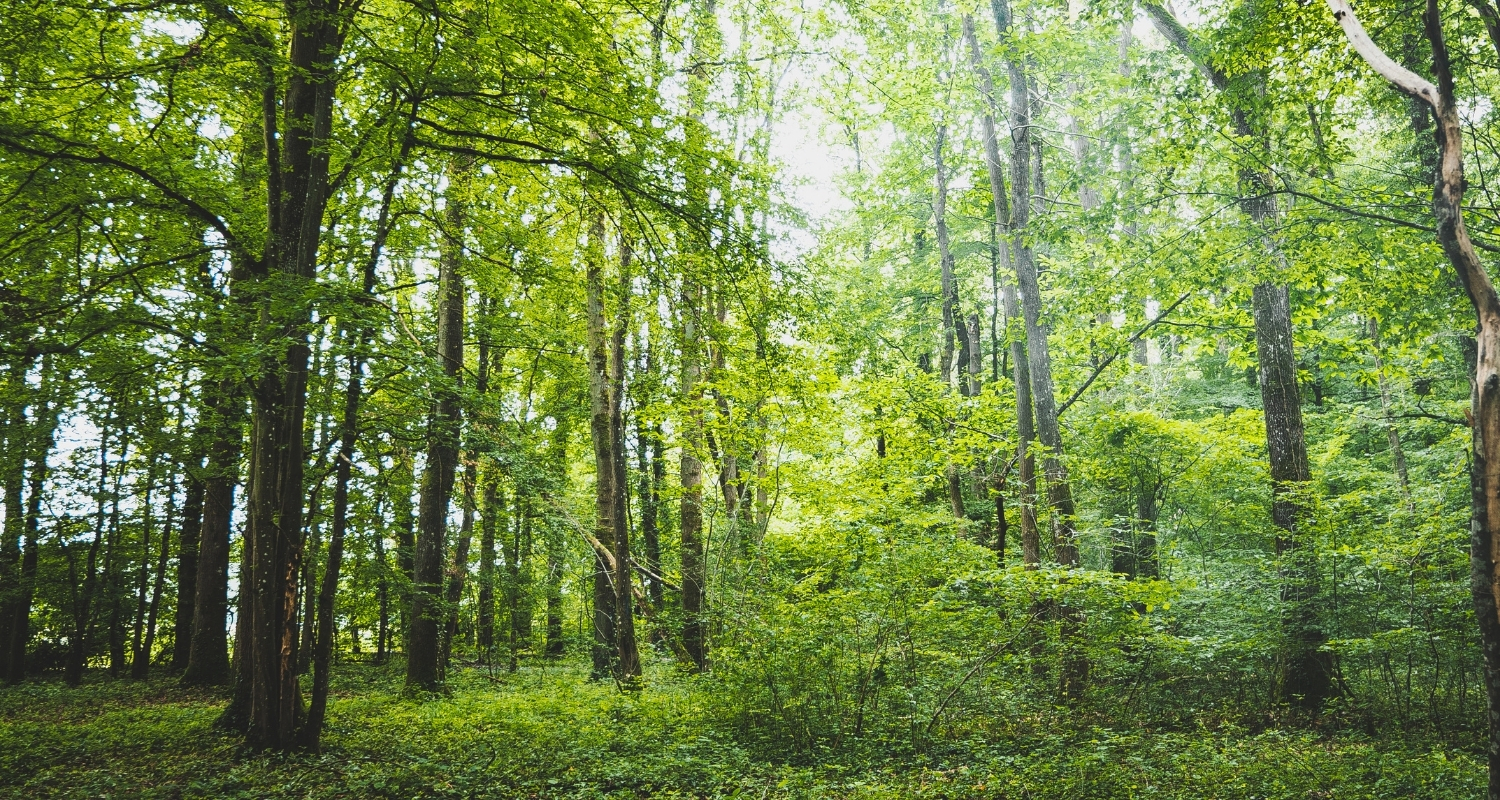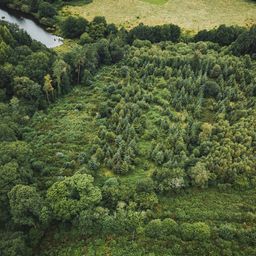Sep 8, 2025
How do we choose the tree species we plant in our forest?
Discover EcoTree’s approach to tree species selection, prioritising native tree species for ecosystem restoration, soil conservation, and sustainable forest management.

Forests are more than just trees; they are living ecosystems that protect our climate, preserve biodiversity, and support soil and water health. But when it comes to tree species selection, many wonder: how do we choose the right trees for our forest?
At EcoTree, we view forests as dynamic ecosystems that safeguard our climate, conserve biodiversity, and nurture soil and water health, rather than just trees that will be cut down for timber. A frequent question we receive regarding tree species selection is: How do we decide which trees are best suited for our forests?
As an international European business with operations in France and Denmark, we see every day how making the right choices for planting, especially focusing on native tree species, can transform landscapes into rich, thriving ecosystems.
Tree species selection is the process of choosing which species to plant based on environmental conditions, ecological goals, and management objectives.
1. What is tree species selection, and why is it important?
For us at EcoTree, tree species selection is at the core of sustainable forestry. The species we plant dictate the long-term health, resilience, and biodiversity of our forests. Carefully selecting well-adapted species ensures that our woodlands are not only productive but also resilient in the face of climate change and hospitable to wildlife.
Why it matters:
- It ensures forest health and resilience.
- Supports biodiversity and local wildlife.
- Enhance carbon sequestration to fight climate change.
Practical considerations:
- We take into account the growth rate, disease resistance, and compatibility with other species.
- We consider long-term forest management objectives, such as timber production, soil preservation, or ecosystem revitalisation.
Selecting the right tree species is crucial for fostering healthy forests and ensuring sustainability for future generations. This informed decision-making directly contributes to these vital goals.

2. Why do we prioritise native tree species?
A tree species occurring within its natural range (past or present) and dispersal potential (i.e., within the range it occupies naturally or could occupy without direct or indirect introduction or care by humans).
A tree species occurring within its natural range (past or present) and dispersal potential (i.e., within the range it naturally occupies or could occupy without direct or indirect introduction or care by humans). We plant native tree species in our forestry projects because they are naturally adaptable to local conditions, at times require less upkeep, are often immune to the pests and diseases prevalent in the area, and provide sustenance and shelter to local wildlife.
In France, for example, Oak and Chestnut; in Denmark, Beech and Oak are the pillars. Planting them connects us to heritage while refreshing nature's equilibrium.
3. How do we choose tree species for soil and climate?
Our forestry teams begin every project with a thorough analysis of soil and climate conditions. Different trees flourish in various environments; some require sandy and well-drained soils, while others prefer clay or loam. Climate factors, such as rainfall and temperature, can also impact our decisions.
By integrating ecological data and our extensive field experience, we guarantee that each EcoTree forest is well-suited to its environment and robust against future climate shifts.
4. How does biodiversity affect our tree species selection?
Biodiversity is at the heart of every one of our projects. We prioritise planting diverse species; we do not plant monocultures, incorporating both fast-growing trees for quicker canopy cover and slow-growing species for long-term forest health. We also plant forest edges, which often feature a more diverse range of trees and hedges, creating a transitional zone between the forest and surrounding areas. This approach helps foster resilience and strength in forests, benefiting pollinators, birds, and other wildlife. Learn how biodiversity shapes our tree planting.
5. Which native tree species are planted at EcoTree?
EcoTree prioritises planting native tree species in France and Denmark, selecting them for their ecological benefits and suitability to local climates. Our focus is on species that are well-adapted to their specific environments.
The following are some of the native tree species we plant, along with their significance:

Examples of native species we plant in France:
For our reforestation initiatives in France, we meticulously choose a diverse array of tree species. Each selection is based on its ecological advantages, resilience, and positive impact on forest health and biodiversity. That also means that the species we plant in Central France are not necessarily the same species we plant in North-western France.
Examples of native species in Indre-et-Loire region
Downy Oak (Quercus pubescens): Is a deciduous tree native to temperate regions of the northern hemisphere, belonging to the Fagaceae family. It typically grows between 15 and 25 meters in height, with alternate, pubescent leaves on the underside.
Hornbeam (Carpinus betulus): Native to Indre-et-Loire, this understory tree is commonly planted with oaks and ashes. It plays a vital role in enhancing mixed forest resilience and biodiversity.
- Chestnut: The sweet chestnut is ecologically significant, offering a habitat and food source for diverse wildlife. Its deep roots also contribute to soil stability and erosion prevention, especially on hillsides.
Examples of native species in French Brittany
Wild Cherry (Prunus avium): Contributes to structural diversity and provides food for birds and insects.
European Beech (Fagus sylvatica): A dominant deciduous tree, contributing to dense canopy cover and long-term forest health.
- Scots Pine (Pinus sylvestris): This native conifer thrives in sandy soils, contributing to soil stabilisation and biodiversity within forested regions.
Examples of native species we plant in Denmark:
In our Danish forests, particularly in Thisted and Kalundborg, we prioritise planting native species that thrive in northern climates and wet or very sandy soil. These selections contribute to biodiversity, improve soil quality, and enhance the natural landscape.
Our selection includes:
Sessile Oak (Quercus petraea): This is a foundational species that offers habitat, promotes biodiversity, and sequesters carbon.
Norway maple (Acer platanoides): This species is highly adaptable to various conditions, contributing positively to forest structure and biodiversity.
- Pedunculate oak (Quercus robur): The large, iconic Danish oak is ecologically one of the most valuable trees in the region, supporting hundreds of species of insects, birds, and fungi.
Each species, chosen for its ecological resilience, plays a vital role in forest restoration, soil conservation, and climate adaptation. This varied combination enhances the strength of our forests, guaranteeing their resilience and long-term viability.
6. Can our tree species selection prevent soil erosion?
Yes, we deliberately choose species with deep, strong root systems to stabilise soil, particularly in vulnerable areas. Our tree planting efforts go beyond simply adding trees; they are about restoring entire ecosystems. By selecting the appropriate trees, we effectively prevent erosion, safeguard waterways, and enrich soils with organic matter.

7. How do we monitor the success of our tree species selection?
Our responsibility does not end once the trees are planted. We continuously monitor growth and survival rates, as well as use biodiversity indicators, across all our forests, to ensure the healthy progress of the forest ecosystem. This enables us to provide transparent reporting, ensuring that individuals and businesses contributing to our initiatives can clearly see the tangible and lasting impact of their investment in nature.
We are dedicated to building resilient forests that thrive for generations to come. We achieve this by meticulously selecting native tree species, carefully considering soil and climate conditions, and prioritising biodiversity. Our mission is to restore forests, combat climate change, and create flourishing habitats for climate-conscious communities across France, Denmark, and the rest of Europe. By working together, we can cultivate more than just trees; we can cultivate a sustainable future.














